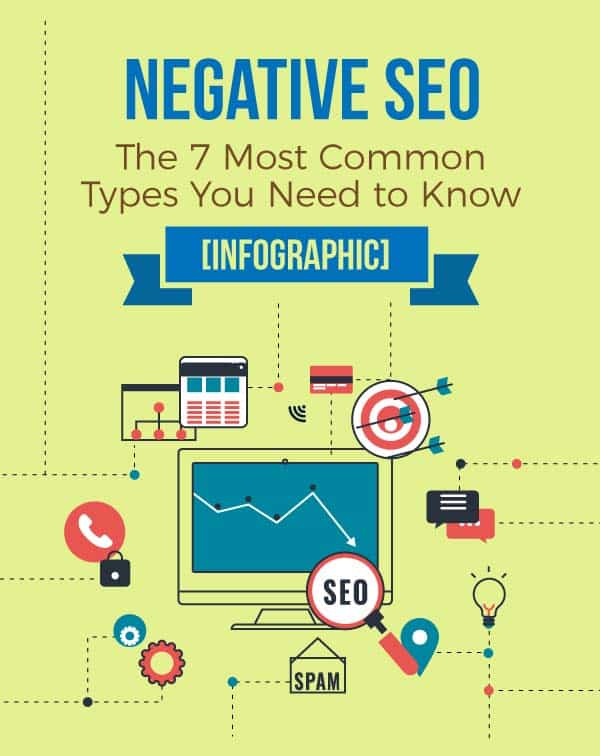Discover the dark side of SEO with Negative SEO tactics exposed! Learn how to protect your website from malicious attacks.

Image courtesy of via DALL-E 3
Table of Contents
Introduction to Negative SEO
Have you ever heard of Negative SEO? It’s a sneaky tactic that can harm websites and their search engine rankings. But before we dive into Negative SEO, let’s first talk about what SEO is.
What is SEO?
SEO stands for search engine optimization, which is a way to make websites more visible on search engines like Google. It helps websites rank higher in search results, attracting more visitors and potential customers.
What is Negative SEO?
Now, Negative SEO is the dark side of SEO. It involves trying to harm a competitor’s website by using malicious tactics to make it rank lower in search results. It’s like playing dirty in the online world to take down someone else’s website.
Causes of Negative SEO
One of the tactics used in Negative SEO is creating bad backlinks to a website. Backlinks are links from other websites that point to yours. When search engines see that a website has a lot of low-quality or spammy backlinks, they may think the site is not trustworthy or relevant, causing its ranking to drop.
Website Hacking
Hackers can break into websites and make harmful changes that affect their search rankings. They can inject malicious code, delete valuable content, or even take control of the entire site. These actions can lead to a decrease in search engine visibility and trust, resulting in lower rankings.
Fake Reviews
Posting fake negative reviews is another way Negative SEO can harm a website. These reviews can damage the reputation of a brand and lower its search ranking. Search engines take into account user-generated content, and if they detect a high number of negative reviews, it can negatively impact a website’s credibility.
Signs of Negative SEO
Have you noticed that your website suddenly isn’t showing up as high in search results as it used to? This could be a sign of Negative SEO at play. When someone tries to harm your website’s ranking, they may use tactics that cause search engines to view your site less favorably, resulting in a drop in rankings.

Image courtesy of www.greengeeks.com via Google Images
Unusual Traffic Patterns
Another sign to watch out for is unusual changes in your website’s traffic patterns. If you see a sudden spike or drop in visitors without any clear explanation, it could be a red flag that someone is trying to manipulate your website’s performance through Negative SEO tactics.
Security Alerts
If your website hosting service sends you security alerts about unauthorized access attempts or suspicious activities, it’s essential to take these warnings seriously. These alerts could indicate that your site is being targeted by Negative SEO practitioners who are trying to exploit vulnerabilities to harm your online presence.
Preventing Negative SEO
One way to prevent Negative SEO from harming your website is to regularly check your backlinks. Backlinks are links from other websites that point to yours. It’s important to ensure these backlinks are from trustworthy and reputable sites. If you notice any suspicious or low-quality backlinks pointing to your website, you can disavow them using tools provided by search engines like Google.
Enhance Website Security
Another crucial step in preventing Negative SEO is to enhance your website’s security. Hackers can exploit vulnerabilities in your website to carry out negative tactics. To protect your site, make sure you have strong passwords, update your software regularly, install security plugins, and consider using HTTPS encryption to secure data transmission between your website and its visitors.
Create Quality Content
Creating high-quality and valuable content for your website can also act as a defense against Negative SEO. Search engines value informative and engaging content, so focus on producing content that is relevant to your audience. By consistently delivering quality content, you can improve your website’s authority and credibility, making it less susceptible to negative tactics.
Tools to Detect Negative SEO
When it comes to protecting your website from the harmful effects of Negative SEO, early detection is key. Using the right tools can help you identify suspicious activities and take necessary action to safeguard your online presence. Here are some essential tools that can assist you in detecting Negative SEO:

Image courtesy of www.pagetrafficbuzz.com via Google Images
Google Search Console
Google Search Console is a free tool provided by Google that helps website owners monitor and maintain their site’s presence in Google search results. By regularly checking the Console, you can keep track of your website’s performance, identify any issues, and detect any unusual activities that may point towards Negative SEO. It provides valuable insights into how Google views your site and can alert you to potential issues such as security breaches or sudden drops in rankings.
Other SEO Tools
In addition to Google Search Console, there are several other popular SEO tools available that can help you detect Negative SEO activities. Tools like Ahrefs and SEMrush offer features that allow you to analyze your backlink profile, track keyword rankings, and monitor changes in website traffic. By utilizing these tools, you can stay informed about any suspicious behavior that may be impacting your site’s search performance.
Setting Up Alerts
Setting up alerts can be a proactive way to stay on top of any malicious activities that could harm your website’s SEO. By configuring alerts for specific metrics such as sudden drops in rankings, an increase in spammy backlinks, or security warnings, you can receive instant notifications when these issues arise. This will enable you to take swift action to address the problem and mitigate the impact of Negative SEO.
Combating Negative SEO
If you find that your website has been targeted with bad backlinks, there is a way to fight back. By using tools like Google’s Disavow Links tool, you can tell search engines to ignore these harmful links when assessing your website’s ranking. This can help mitigate the negative impact of these bad backlinks on your site.
Reporting Fake Reviews
Fake reviews can damage your brand’s reputation and affect your search engine ranking. If you suspect that your website is being targeted with fake reviews, it’s important to report them to the platforms they are posted on. Most review platforms have policies against fake reviews and will investigate and potentially remove them if they violate their guidelines.
Fixing Security Issues
One of the most crucial steps in combating Negative SEO is to address any security vulnerabilities on your website. Hackers can exploit security weaknesses to harm your website’s ranking or even take control of it. By ensuring your website has strong security measures in place, such as using secure passwords, updating software regularly, and implementing HTTPS encryption, you can reduce the risk of falling victim to Negative SEO through hacking.
Case Studies of Negative SEO
Let’s talk about a small local business that sells handmade pet accessories online. The business owner noticed that their website was suddenly not showing up on the first page of Google search results, where it used to be. After some investigation, they discovered that a competitor had been creating bad backlinks to their site, which was negatively affecting their search engine ranking.

Image courtesy of www.pagetrafficbuzz.com via Google Images
The business owner took action by using tools to disavow these harmful backlinks and reached out to Google to report the issue. They also started creating more valuable content and building relationships with other reputable websites to improve their SEO. Over time, the website’s ranking gradually improved, and the negative SEO attack was successfully mitigated.
Example 2: An E-commerce Site
Now, let’s look at an e-commerce site that sells beauty products online. This site experienced a hacking incident where the hackers manipulated the site’s content to include keywords that violated Google’s guidelines. As a result, the site’s search engine ranking plummeted, and customers started complaining about the suspicious content.
The e-commerce site took immediate action by hiring cybersecurity experts to fix the security vulnerabilities on their website. They also requested Google to re-index their site after removing the malicious content. By proactively addressing the security issues and monitoring their website closely, the e-commerce site was able to recover from the negative SEO attack and regain their customers’ trust.
How to Help Others
One way to help others dealing with Negative SEO is by sharing your knowledge and offering advice. If you have experienced Negative SEO or have information on how to combat it, don’t hesitate to assist friends or other website owners who may be facing similar challenges. Providing guidance and tips can make a significant difference in helping them protect their websites.
Joining Communities
Another way to support those affected by Negative SEO is by joining online communities dedicated to SEO and website security. By participating in these forums or groups, you can offer support, exchange ideas, and learn from others’ experiences. Being part of a community can also help you stay updated on the latest trends and tools in combating Negative SEO.
Spreading Awareness
To make a broader impact in fighting Negative SEO, it’s essential to spread awareness about this malicious practice. You can raise awareness by talking about Negative SEO with your peers, sharing articles or resources on social media, or even organizing events or webinars to educate others. By spreading the word, you can help protect more websites from falling victim to these harmful tactics.
Conclusion
In this article, we talked about Negative SEO and how it can harm websites. We learned about SEO, which helps websites rank higher on search engines like Google, and Negative SEO, which is a way to harm a competitor’s website to make it rank lower in search results.

Image courtesy of bloggerspassion.com via Google Images
We also discussed the causes of Negative SEO, such as bad backlinks, hacking, and fake reviews. It’s essential to be aware of these tactics to protect your website from harm.
Recognizing the signs of Negative SEO, like a sudden drop in rankings, unusual traffic patterns, and security alerts, can help you take action quickly to address any issues.
Preventing Negative SEO involves monitoring backlinks, enhancing website security, and creating quality content. By following these tips, you can protect your website from malicious attacks.
Additionally, we introduced tools like Google Search Console, other SEO tools, and setting up alerts to detect Negative SEO activities early on.
If you find yourself a victim of Negative SEO, remember to disavow bad links, report fake reviews, and fix any security issues promptly.
By sharing real-life case studies of Negative SEO and providing advice on how to help others, we can all work together to combat this harmful practice.
Remember to stay vigilant and proactive in protecting your website from Negative SEO. By staying informed and taking the necessary steps, you can safeguard your online presence and reputation.
FAQs
Can Negative SEO happen to any website?
Yes, Negative SEO can happen to any website. Any website that competes for the same keywords as others can be a target for Negative SEO. It is essential to be aware of this and take precautions to protect your site.
How often should I check my website for Negative SEO?
It is recommended to check your website for Negative SEO activities regularly. Aim to monitor your website at least once a week to stay on top of any potential threats and take action promptly if needed.
Is it expensive to protect my website from Negative SEO?
Protecting your website from Negative SEO does not have to be expensive. There are various free tools available, like Google Search Console, that can help you monitor your website’s health and detect any suspicious activities. Additionally, investing in website security and creating quality content can also help safeguard your site without breaking the bank.







